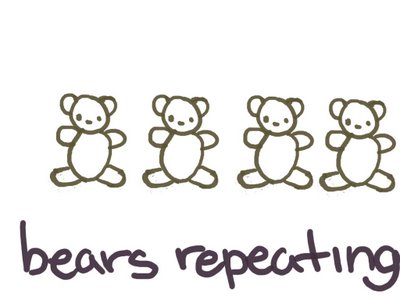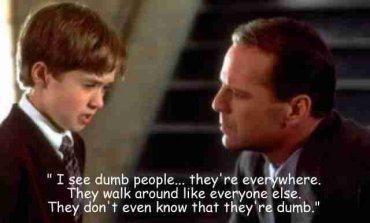This would be in the style of an OSSR, but of course the 4e DMG2 isn't really old school, in that it is just four years old. 4th edition D&D was essentially stillborn, and the people at Wizards of the Coast thrashed around a lot in a vain attempt to get things going. Ideally, the DMG was supposed to be a yearly journal of Dungeon Mastering, where a new DMG would be made every year and filled with the latest and greatest ideas of running a game. The first three DMGs were scheduled to be mostly about the first three "tiers", with the DMG2 scheduled to primarily focus on "Paragon Play" and the DMG3 was to be focused on "Epic Play". I don't know if the DMG4 was even concepted, as even the DMG3 never saw the light of day.
The DMG2 represents the first identifiable point of absolute panic in the 4th edition D&D design staff. 4th edition was supposed to be the next big thing and it just... wasn't. In the runup to 4th edition, the designers had made a series of pitches to Hasbro detailing how they were going to grow the brand to a multi-million dollar revenue stream, and when they not only failed to do that but even produced a new line that no one seemed to want to buy... shit got real. People got fired. In fact, the head of D&D got fired every single year for the entire length of 4th edition's ill-fated run. And the DMG2 is where shit has just started to hit the fan. Rob Heinsoo and David Noonan have been let go, and while Noonan appeared to land on his feet (writing for MMOs, as was his true calling), Rob Heinsoo to this day is doing the game design equivalent of turning tricks in the back alley: hawking derivative third party 4e clones to the remaining 4e fans when they hold their conventions at the salad bar of Red Lobster. So the new 4e staff was justifiably running scared: they knew that if they didn't stop the ship from sinking that they'd be out of a job as well.
This book represents the first major attempt to bail out 4th edition. The works before had been commissioned too far in advance and were stuck on the old plan. It was hoped that this book could change course enough to save the line and save Andy Collins' job. As it happens, it is a historical fact that it did not. Andy Collins was out of a job within the year. The next man in the hotseat was Bill Slavicsek and his changes were even more drastic (but ultimately equally insufficient to save the line or his job). But watching what they were willing to do to try to salvage things in short order once they saw the sales figures and got yelled at by upper management is historically interesting. So grab yourself a glass of mead, because Mene Mene Tekel Upharsin, it's time to read The 4th Edition Dungeon Master's Guide 2.

A Note on Conspiracy Theories
While the dude who got the boot for the failure of 4th edition to right itself in 2009 was Andy Collins, his contributions to the actual flagship rulebook of the new direction was fairly minor. The main designers were James Wyatt, Bill Slavicsek, Mike Mearls, and Robin Laws. Robin Laws was a mercenary brought in because he is acknowledged in the industry as the man whose is the absolute best at writing things that sound like sagely wisdom on the subject of MCing a game. That's why they brought him in on the 3.5 DMG. The point as far as conspiracy theorists are concerned is that Mike Mearls and James Wyatt had a fair amount of impact on the new direction, but for whatever reason their jobs weren't on the line. Make of that what you will.
Introduction
The introduction of this book is a two page affair that begins by shilling the PHB2 and MM2. The introduction is signed by James Wyatt, and to this day I have no idea how this man has managed to avoid getting fired through all of the layoff rounds that happen every year. Rather than describing what the book is about, the introduction is an attempt to sell you on the book. Wyatt promises us "juicy rules bits" and also "expert advice" - in that order. Problem is of course, this is actually the opposite order from how they appear in the book. This means that he starts to give us a chapter breakdown that goes "chapter 2, chapter 4, chapter 5". That is fucking retarded. It is a fucking two page foreword, it is inconceivable to me that a professional author couldn't work the text of their description of the text it around the actual order of the material in the finished product. I need another drink.
Then Wyatt plugs D&D Insider, and notes that a bunch of the material in the book has been pulled from web columns by Stephen Radney-MacFarland, Mike Mearls, and... James Wyatt. He tries to make this sound like it means you need to get yourself a D&D Insider account, but really it makes it sound like two of the guys who weren't going to get to get fired if this book crashed and burned submitted a bunch of recycled bullshit blog posts instead of doing real design work. The introduction ends with an admonishment to use little snippets from lots of different books so that you have to buy more books.
James Wyatt can haz design work.
Chapter 1: Group Storytelling
Most of this chapter seems to have been written by Robin Laws. I make this guess because it looks like it could have been copypastaed from other Robin Laws books and explicitly keeps itself speaking in generalities, story structure, and table dynamics. In short: something that could be written by someone who honestly doesn't know the 4th edition D&D ruleset and doesn't give a fuck. It's interesting to note that there are little text boxes here and there which contain references to rules, page numbers, and other books. These text boxes are clearly the work of a different author, which makes me wonder how much editing this book could possibly have undergone. K and I have made it difficult for people to tell where my writing ends and K begins or vice versa, and we don't even have an editor. Writing style shifts this abrupt within a published product are weird to me.
But it's not just that the text boxes are obviously written by another author. They are written by another author that vehemently disagrees with what the author of the main text is saying. This gets to its most surreal in the section on incorporating player input into the campaign world. The author of the main text (that is: Robin Laws) makes this utopian point about how when someone gives an idea of how to make the campaign world that you should try to incorporate the idea in at least an attenuated form. You know: the basics of cooperative storytelling. Then the compiler of the book (that is: James Wyatt) directs you to a piece of boxes text that furiously backpeddles all of that with this weird tirade about how if you took "Necrotic Damage" out of the game, then everything would collapse. And because apparently the game is so fragile that it can't persist without sputtering and collapsing if you combined two obscure damage types, you have to be prepared to shut those fucking players down if they suggest having a campaign setting where such obscure bullshit is dispensed with.
Laws essays are fun to read, and while I don't always agree with him, he does tend to sell his ideas well. In this case, the primary point he seems to have been asked to make is that as a DM you have to provide ways for the story to move forward even if the player characters fail. This is a point I find rather obvious, but was probably demanded quite early in the design specs for this book because the Skill Challenge rules in the DMG 1 involve players failing like all the damn time at everything they do. One of the more intrusive sets of boxed texts takes you through an example of play of deciding to play a game of D&D. This is a huge waste of space.
Despite the fact that it's a fairly decent read, this chapter is fairly bad for the book in my opinion. It's the first chapter, and it's basically not about D&D. It's about the philosophy of role playing, and it is difficult for me to imagine going to read it as a reference. Having it take up space in what is nominally a core rulebook is questionable, and leading with it is downright counterproductive. This book is supposed to be making the case for the reader to give 4th edition D&D another chance after the disastrous catastrofuck that was the initial set of releases. And it doesn't. This chapter presents a vision of collaborative storytelling that is enticing, but completely and unabashedly unrelated to the 4th edition rules.
Then, on page 20 the book segues into a Save My Game article from the web. It appears to be put in essentially unmodified from the original context, and it both repeats some of the points just made and also counteracts some of the advice from earlier in the chapter. Either this really...

...or the compiler of this book (James Wyatt) is really fucking lazy and wanted an extra page and a half of text and couldn't be fucked to find something that actually fit the flow of the book. Considering that the next half-page is taken up by boxed text containing a reprint from a blog entry of James Wyatt talking about how he reskinned a tiefling rogue into a fire monster from the Monster Manual because his son wanted to play one... I'm guessing it's the whole lazy as fuck thing going on. The blog entry not only doesn't even remotely belong with the text before or after it in the book, it actually serves to highlight how boring, flavorless, and limited 4th edition is as a game.
Several pages later, after we get a discussion about vignettes and a discussion about using polling data to craft campaign directions, and a bunch more chunks of boxed text padding, we actually get to something that could credibly be called related to James Wyatt's blog post about jerking his son around: a piece about "Companion Characters". This is the first part of the book that is really about the rules of the game, and it is an absolute train wreck. See, one of the places 4th edition really failed hard was in making the rules for player characters completely non-transparent with the rules for monsters. So naturally, any discussion of monsters who are on the same team as the players has to straddle those two incompatible rules systems - and the results do not compatiblize in this case.

Shortly after the printing of this book, they did a wholesale errata rampage where they changed all the NPC numbers by edict. I have no idea how that would impact the "quasi-NPCs" described in this sub-chapter. Then they have a set of rules for playing characters of different levels in the same party, which is a ham-handed attempt to fit City of Villains style sidekicking into the game. Apparently they felt that 4th edition wasn't being compared to an MMO often enough or with enough disdain, and that people who openly mocked it for shitting on verisimilitude so hard didn't have enough ammunition. So they implemented a system by which higher level characters took big "for no reason" penalties for hanging out with lower level characters in order to not overshadow them while leading them through newb zones.
Note: despite the fact that this is "The Paragon Play" book, the entire first chapter has pretty much nothing to do with Paragon play. It actually mentions the word paragon a few times in the boxed text, possibly to remind you of how much the primary chapter author didn't give a flying rat's ass about 4th edition rules or conventions. But these so-called "paragon" events are almost wholly irrelevant to the label. Example:
Does that sound especially paragonal to you? They have "begun exploring the Underdark"? How could that not be a 5th or even 1st level lead? I mean, it's not even that they are veterans of the Underdark, apparently this is something they have just begun doing. That counted as Name Level back in the GDQ days, but now Drow are in the basic book and you can fucking play one. Certainly, if you are in the part of the Underdark where there are fucking Dwarves and not gateways to the Demonweb Pits, you are hard pressed to convince me that this is a particularly high level concept.James Wyatt wrote:Previously in the campaign, the paragon-level PCs had begun exploring the Underdark. They know of a dwarven stronghold that they hope to make their base of operations for their delving, but encounters with dwarf patrols have warned them that the dwarf king is unstable.
That's it for Chapter 1. Five more to go, and the next one is Chapter 2: Advanced Encounters.
-Username17




